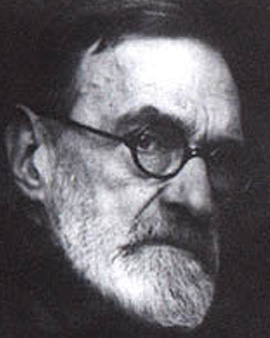Pedro Figari is often compared with other Latin American artists such as Diego Rivera and Tarsila do Amaral, because he has rendered outstanding services to a new self-confidence of modern art in Latin America. For a long time, it had not been able to emancipate itself from the European tradition.
Even before studying painting, Figari made sketches in watercolours and oils, but it was only after a detour through a strongly Italian and academic phase that he found his way back to his naive style. Figari initially studied law and, as a trained criminal and civil defence lawyer, actively engaged himself in the cause of the poor. With his pictures he wanted to make his compatriots love precisely that which belonged to them in their homeland, even without great financial wealth. His paintings therefore mostly show scenes of traditional Uruguayan life such as the Bocia train, pampas or the local folklore dancers performing candombe.
Figari lived in France for almost ten years as a young man, then settled in Buenos Aires, became a Member of Parliament in Uruguay, Minister for Foreign Affairs in London and returned to Montevideo only shortly before his death. Figari always painted the pictures of his homeland from memory. His works of art are therefore less a documentation than a reconstruction of the life and country of the gauchos. Without wanting to reproduce the historical accuracy of a scene, Pedro Figari thus succeeded in portraying above all the emotional energy of the moment experienced.
×





.jpg)
.jpg)
.jpg)
.jpg)
.jpg)
.jpg)
 - (MeisterDrucke-240360).jpg)
 - (MeisterDrucke-240360).jpg)
.jpg)
.jpg)
_-_(MeisterDrucke-890914).jpg)
_-_(MeisterDrucke-890914).jpg)
.jpg)
.jpg)
_-_(MeisterDrucke-1647053).jpg)
_-_(MeisterDrucke-1647053).jpg)
.jpg)
.jpg)
_-_(MeisterDrucke-892007).jpg)
_-_(MeisterDrucke-892007).jpg)
_Nostalgias_Africanas_(Candombe)_-_(MeisterDrucke-889897).jpg)
_Nostalgias_Africanas_(Candombe)_-_(MeisterDrucke-889897).jpg)
_-_(MeisterDrucke-156047).jpg)
_-_(MeisterDrucke-156047).jpg)
.jpg)
.jpg)
.jpg)
.jpg)
.jpg)
.jpg)
.jpg)
.jpg)
.jpg)
.jpg)
.jpg)
.jpg)
_-_(MeisterDrucke-635768).jpg)
_-_(MeisterDrucke-635768).jpg)
.jpg)
.jpg)
.jpg)
.jpg)
.jpg)
.jpg)
.jpg)
.jpg)
.jpg)
.jpg)
.jpg)
.jpg)
.jpg)
.jpg)
.jpg)
.jpg)
.jpg)
.jpg)
.jpg)
.jpg)
_c_1935_(oil_on_board)_-_(MeisterDrucke-1316053).jpg)
_c_1935_(oil_on_board)_-_(MeisterDrucke-1316053).jpg)
.jpg)
.jpg)
.jpg)
.jpg)
.jpg)
.jpg)
.jpg)
.jpg)
.jpg)
.jpg)
_-_(MeisterDrucke-1126102).jpg)
_-_(MeisterDrucke-1126102).jpg)
.jpg)
.jpg)
.jpg)
.jpg)
.jpg)
.jpg)
.jpg)
.jpg)
.jpg)
.jpg)
.jpg)
.jpg)
.jpg)
.jpg)
.jpg)
.jpg)
.jpg)
.jpg)
.jpg)
.jpg)
.jpg)
.jpg)
.jpg)
.jpg)
.jpg)
.jpg)
.jpg)
.jpg)
.jpg)
.jpg)
.jpg)
.jpg)
.jpg)
.jpg)
.jpg)
.jpg)
_-_(MeisterDrucke-892064).jpg)
_-_(MeisterDrucke-892064).jpg)
.jpg)
.jpg)
.jpg)
.jpg)
.jpg)
.jpg)
.jpg)
.jpg)
.jpg)
.jpg)






